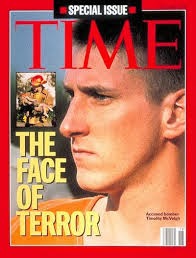How would you describe the face of Lauren Bacall?
favim.com
How would you describe the face of Lauren Bacall? Celebrated
writers such as Charles Dickens and George Eliot described characters' faces vividly without going into detail. |
According to this research, "less is more," based on analysis of the facial descriptions in classic literature.
Here's the story:
Vivid descriptions of faces
don't have to go into detail.
Celebrated writers such as Charles Dickens and George Eliot described characters' faces vividly without going into detail about their features, according to a research group led at the University of Strathclyde in Glasgow, Scotland.
Experts in literature, psychology, neurology and music suggested that vividness can be created not only by describing individual features, such as the eyes, nose or chin, but by the strength of readers' feelings about how a person is depicted.
These feelings may be triggered by the 'mirror neuron system,' in which people who see an action being performed have the same regions of the brain activated as are needed to perform the action itself- for example, by flinching when they see someone injured.
The researchers illustrated their theory by highlighting descriptions of characters in works by writers including Dickens, Eliot, Geoffrey Chaucer and Sir Walter Scott. They found that, in many cases, the face was not explicitly mentioned but that the scientific literature suggests this may be more beneficial for forming a vivid response to the description.
Dr Elspeth Jajdelska, a lecturer in Strathclyde's Faculty of Humanities & Social Sciences, led the research. She said: "Faces are something we perceive in a different way to other objects.
"Psychological research shows that we perceive and process them as a whole, not as a set of features, and while some literary descriptions of a face supply pieces of information to be assembled like a jigsaw puzzle, others may involve a holistic picture and an immediate response to what the author has described- these may not necessarily be accurate images, in terms of the face the author has in mind, but could still be very vivid.
 |
| Suggested reading |
"However, a writer's description might produce a vivid response with only a partial description if it is also holistic, or draws on emotional qualities of the face."
One of the descriptions examined was of Bill Sikes, the character in Dickens' Oliver Twist, whose black eye is said to have "displayed various parti-colored symptoms of having been recently damaged by a blow." The researchers suggested that this description could be more vivid than one which was more precise about the discoloration.
The researchers' theory defined 'vividness' in several ways, including: something belonging to a stimulus, such as a piece of text; an emotional experience produced by such a stimulus, or how realistic the mental images produced by text are.
Related stories:
* * * * *
Story Source: Materials provided by University of Strathclyde. "Vivid descriptions of faces 'don't have to go into detail'." ScienceDaily. 27 October 2011. 
Comments
Post a Comment